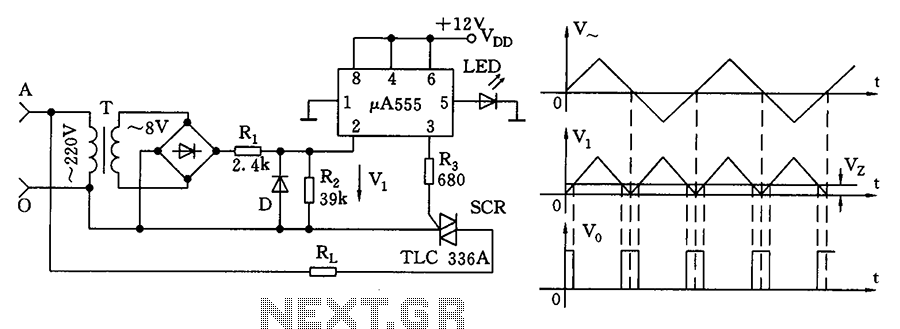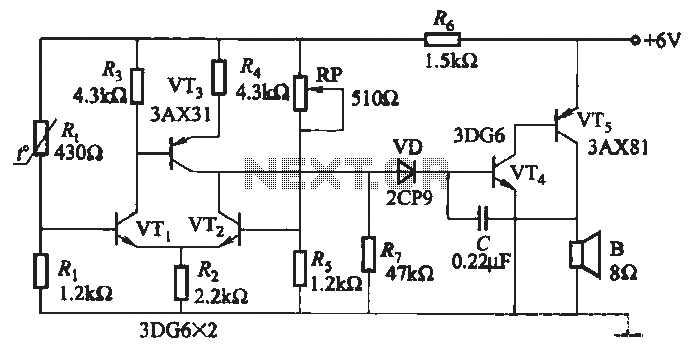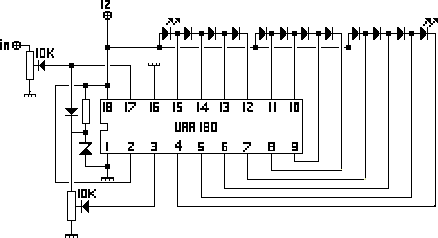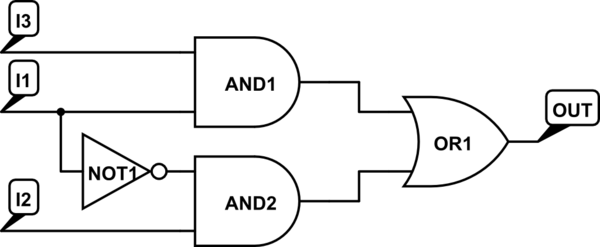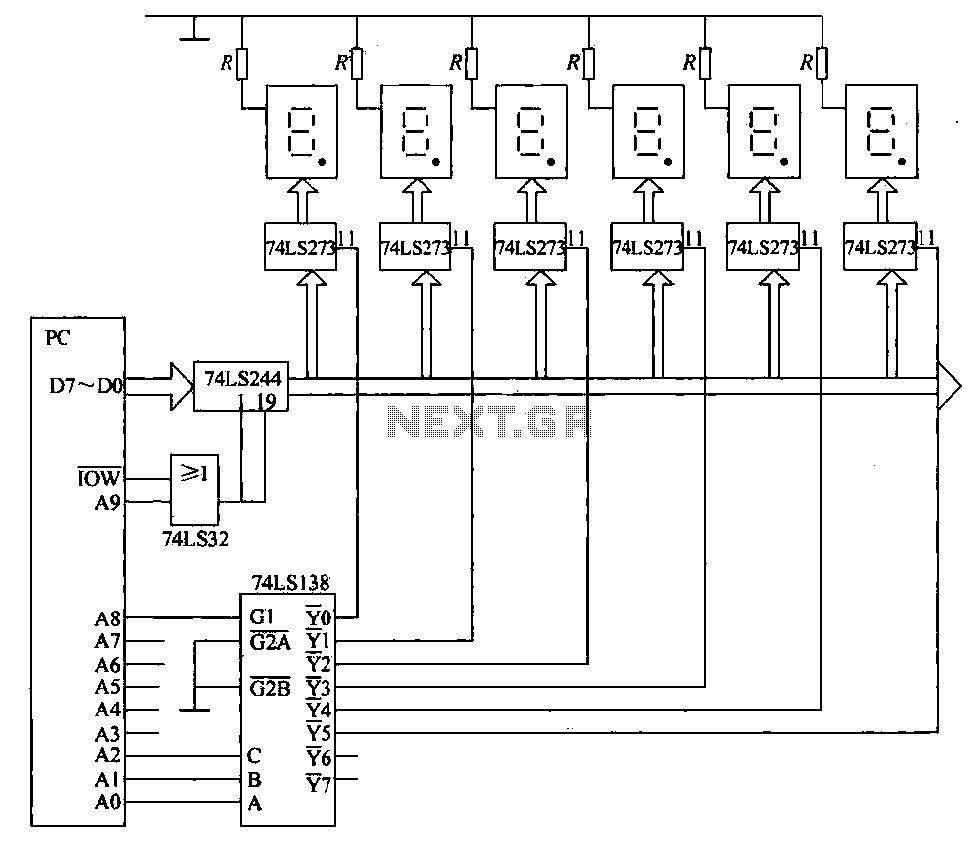
2 -Y-connected two-speed motor contactor control circuit
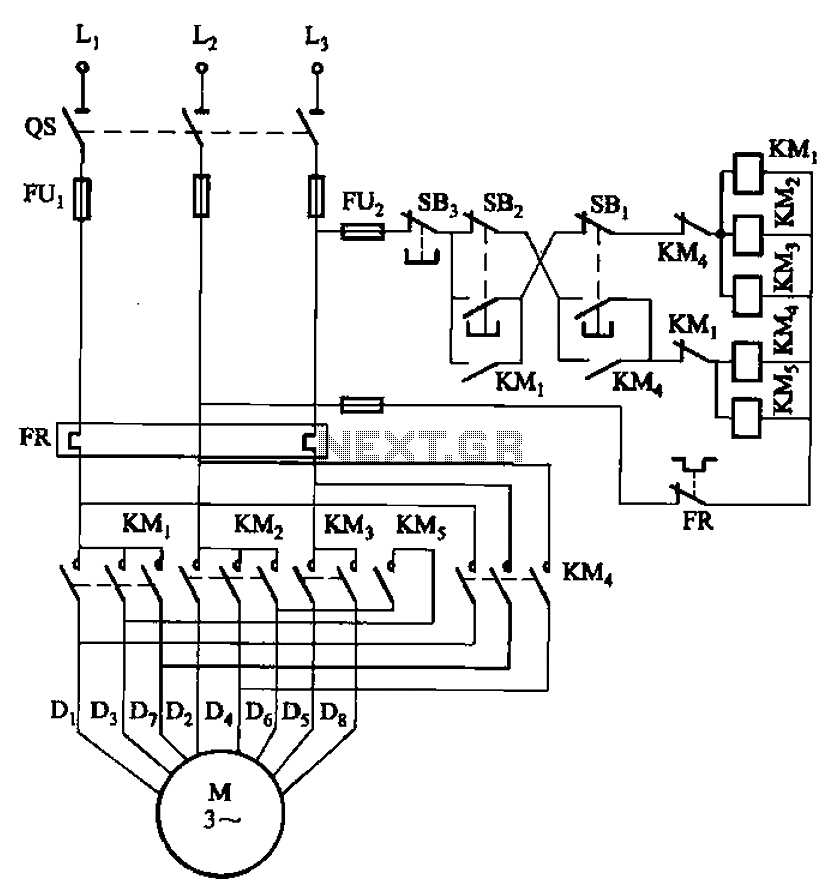
The circuit illustrated in Figure 3-104 features SB2, which functions as the low-speed operation button, and SBi, which serves as the high-speed operation button.
The circuit design utilizes two distinct operational buttons, SB2 and SBi, to control the speed of a connected device or system. SB2 is configured to engage a low-speed mode, likely by controlling the voltage or current supplied to the load, thereby enabling smoother operation at reduced speeds. This mode may be beneficial for applications requiring precision or reduced wear on mechanical components.
Conversely, SBi activates a high-speed mode, allowing for increased performance and faster operation. This button may bypass certain resistive elements or activate additional power stages within the circuit to achieve the desired high-speed functionality. The transition between these two operational states is crucial for applications that demand flexibility in speed control, such as in motors, fans, or other electromechanical systems.
To ensure reliable operation, the circuit may incorporate additional components such as resistors, capacitors, or diodes to manage the electrical characteristics during the switching process. Proper design considerations must be taken into account to prevent issues such as voltage spikes or excessive current draw, which could potentially damage the system.
Overall, the circuit's functionality is determined by the effective implementation of the low-speed and high-speed operation buttons, allowing users to tailor the performance of the connected device to meet specific operational requirements. Circuit shown in Figure 3-104. in graph. SB2 is running at low speed button, SBi as the high-speed operation button.
The circuit design utilizes two distinct operational buttons, SB2 and SBi, to control the speed of a connected device or system. SB2 is configured to engage a low-speed mode, likely by controlling the voltage or current supplied to the load, thereby enabling smoother operation at reduced speeds. This mode may be beneficial for applications requiring precision or reduced wear on mechanical components.
Conversely, SBi activates a high-speed mode, allowing for increased performance and faster operation. This button may bypass certain resistive elements or activate additional power stages within the circuit to achieve the desired high-speed functionality. The transition between these two operational states is crucial for applications that demand flexibility in speed control, such as in motors, fans, or other electromechanical systems.
To ensure reliable operation, the circuit may incorporate additional components such as resistors, capacitors, or diodes to manage the electrical characteristics during the switching process. Proper design considerations must be taken into account to prevent issues such as voltage spikes or excessive current draw, which could potentially damage the system.
Overall, the circuit's functionality is determined by the effective implementation of the low-speed and high-speed operation buttons, allowing users to tailor the performance of the connected device to meet specific operational requirements. Circuit shown in Figure 3-104. in graph. SB2 is running at low speed button, SBi as the high-speed operation button.
